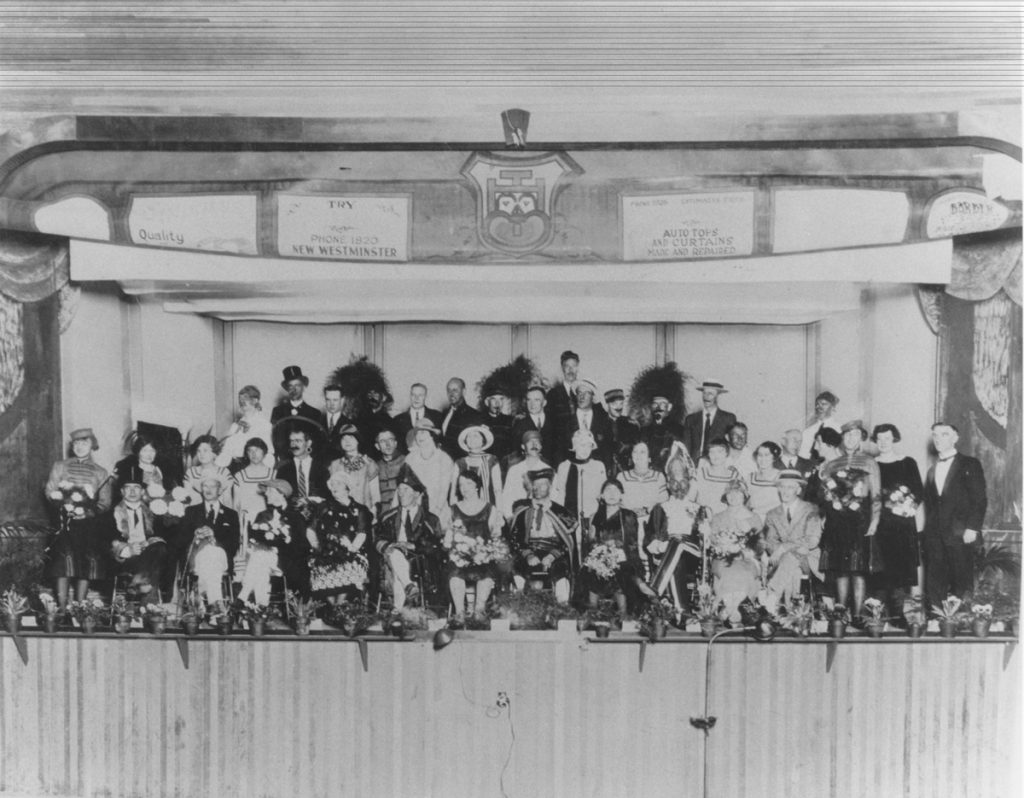Today, we can find and hear music in every aspect of our lives. We have it on our morning commutes, in movies, in stores, at restaurants, and even on the occasional bus. But music was not always so easy to get. In the early settler years, there were just a few ways to hear music.
You could hear the church organ or piano, but that was just on Sundays. After about 1900 you could purchase a gramophone and records but both were expensive and difficult to get. You could also make your own music if you had your own instrument, which, like the gramophone, were expensive and hard to get. If you had your own instrument, and could play it (even badly) you would be roped into a local band to play at events, community gatherings and the local community hall.
For about a hundred years of Maple Ridge history, the place to be on a Saturday night was the local community hall for music night. When people had their own instrument that was transportable, they would be roped into a local band to play Saturday night music at any one of the local halls throughout Maple Ridge.
Even by the 1960’s, the community halls were still the place to be for local music. Local bands like Bud Webb and the Outriders, the Nocturnals, The Harmony Boys, The Merrymakers and so many more all got their start playing at these local community halls for the Saturday or holiday dance nights.
Each neighborhood had its own community hall, which would often be built not long after settlement. In those early years, the community hall was an important part of any community. It was a place where people could gather and socialize and share culture. Theatre troupes, both local and traveling, could perform, folk dancers, they could even become arenas for indoor sports like wrestling and gymnastics. They were an integral part to the well-being and culture of each community they served.
Several of these old halls are still standing. Sampo Hall in Websters Corners was built in 1915 and would serve the community as a cultural space until 1984 when it was sold. The owners kept up the old building until their deaths. The hall still stands as a reminder of the strong community ties it represents, but is currently vacant and in need of upkeep.
Other still standing heritage community halls include the Ruskin Hall, built in 1924 after a fire destroyed the previous hall, and Thornhill hall built in 1961.
Gone but not forgotten are the original Albion hall (1923-2011), Hammond Hall (1921 -1971), Japanese Hall in Whonnock (1926- 1947), Reedsdale Hall (1926-1988), and the 1st Whonnock Community Hall (1912-1977). Many of these spaces have been replaced by larger community centres, which continue to serve their communities in much the same way as their early counterparts.
Shea Henry
Maple Ridge-Pitt Meadows News Sept 18 2019

Cast of the Maple Ridge Glee Club on stage in the Hammond Hall for a performance of “Flora Dora” in the 1920’s.